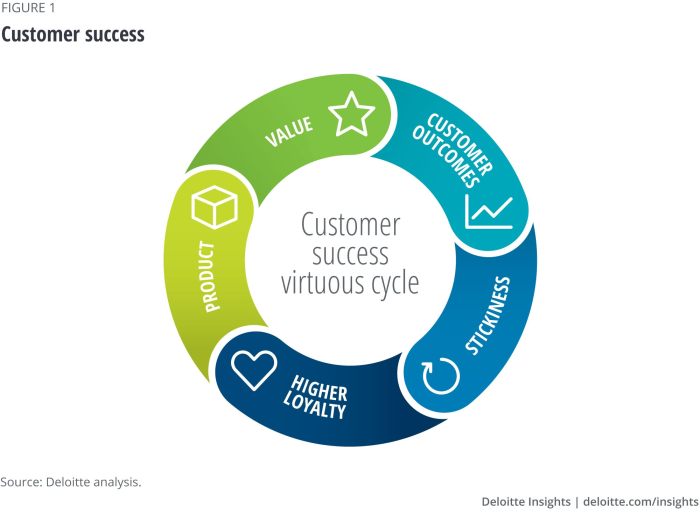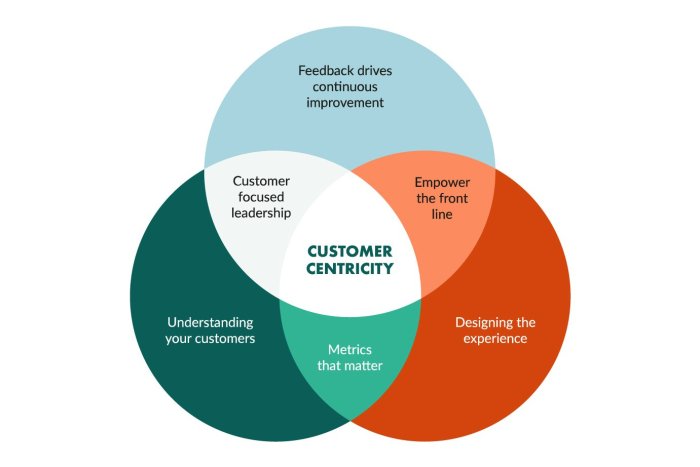Building a Customer-Centric Brand Strategy dives deep into the essence of putting customers at the core of business success. From understanding customer needs to fostering trust and loyalty, this guide unveils the key elements of creating a brand strategy that resonates with consumers.
Importance of Customer-Centric Brand Strategy
In today’s competitive business landscape, building a customer-centric brand strategy is more crucial than ever. By putting the customer at the center of all business decisions, companies can create meaningful connections, drive loyalty, and ultimately increase profitability.
One example of a successful company that has implemented a customer-centric brand strategy is Amazon. By focusing on customer experience, personalization, and convenience, Amazon has become a leader in e-commerce and set a high standard for customer service.
Another great example is Starbucks, which has built a strong brand by prioritizing the customer experience in its stores. From friendly baristas to customizable drinks, Starbucks has created a loyal customer base that keeps coming back for more.
A customer-centric approach can differentiate a brand from its competitors by creating a unique value proposition that resonates with the target audience. By understanding customer needs, preferences, and pain points, companies can tailor their products and services to meet and exceed customer expectations, ultimately leading to long-term success.
Understanding Customer Needs

In order to build a successful customer-centric brand strategy, it is crucial to identify and understand the needs of your target audience. By gaining insights into what customers are looking for, businesses can tailor their products and services to meet those needs effectively.
Process of Identifying Customer Needs
- Conducting surveys and questionnaires to gather feedback directly from customers.
- Utilizing social media listening tools to monitor conversations and sentiments about your brand.
- Engaging in one-on-one interviews or focus groups to delve deeper into customer preferences.
Tools and Techniques for Gathering Customer Insights
- Customer feedback forms on websites or in-store interactions.
- Analytics tools to track website behavior and purchasing patterns.
- Mystery shopping to assess the customer experience in physical locations.
Role of Market Research in Understanding Customer Needs
Market research plays a vital role in understanding customer needs by providing valuable data and insights. Through market research, businesses can analyze industry trends, competitor strategies, and consumer behavior to make informed decisions about their products and services.
Developing a Customer Persona: Building A Customer-Centric Brand Strategy
Creating customer personas is a crucial step in building a customer-centric brand strategy. It involves crafting detailed profiles that represent different segments of your target audience. By understanding the needs, preferences, and behaviors of these personas, businesses can tailor their offerings to better meet customer expectations.
Steps to Develop Detailed Customer Personas
- Conduct Research: Gather data through surveys, interviews, and market analysis to understand customer demographics, psychographics, and buying patterns.
- Identify Patterns: Look for commonalities among customers to group them into distinct personas based on their needs, goals, and challenges.
- Create Profiles: Develop detailed personas with names, ages, occupations, interests, and other relevant information to humanize your target audience.
- Validate with Data: Use real customer data to validate the accuracy of your personas and make adjustments as needed.
Examples of Tailoring Offerings based on Customer Personas
- Persona 1 – Young Urban Professional: Offer convenient, tech-savvy solutions with quick delivery options to meet their on-the-go lifestyle.
- Persona 2 – Stay-at-Home Parent: Provide family-friendly products and services that prioritize safety, affordability, and convenience.
- Persona 3 – Trendy Teenager: Create engaging, visually appealing content on social media platforms to capture their attention and drive brand loyalty.
Implementing Customer Feedback Loops
Customer feedback is crucial for a customer-centric brand strategy as it provides valuable insights into customer preferences, pain points, and expectations. By gathering and acting on feedback, companies can tailor their products and services to better meet the needs of their target audience, ultimately improving customer satisfaction and loyalty.
Establishing Effective Customer Feedback Loops
- Utilize online surveys and feedback forms on your website to gather direct input from customers.
- Monitor social media channels and review sites to track customer comments, complaints, and suggestions.
- Implement a customer feedback management system to organize and analyze feedback data effectively.
- Encourage customer reviews and testimonials to gather authentic feedback from satisfied customers.
Companies Successfully Utilizing Customer Feedback, Building a Customer-Centric Brand Strategy
- Amazon: Amazon uses customer reviews and ratings to continuously improve product offerings and customer experience.
- Netflix: Netflix analyzes viewer data and feedback to personalize recommendations and content selections for users.
- Apple: Apple incorporates customer feedback into product design and development to enhance user experience and innovation.
Personalization and Customization

Personalization and customization play a crucial role in creating a customer-centric brand strategy. By tailoring products or services to meet individual customer needs, brands can establish a deeper connection with their target audience.
Examples of Personalization Strategies
- Customizable products: Brands like Nike and Adidas allow customers to personalize their sneakers with unique colors, patterns, and designs.
- Personalized recommendations: Amazon and Netflix use algorithms to suggest products or movies based on a customer’s browsing history and preferences.
- Tailored communication: Companies send personalized emails or messages addressing customers by their names and offering exclusive deals based on their past purchases.
Benefits of Personalized Experiences
-
Increased customer loyalty: When customers feel that a brand understands their individual preferences and needs, they are more likely to remain loyal and make repeat purchases.
- Higher engagement: Personalized experiences can lead to increased engagement with customers, as they feel valued and appreciated by the brand.
- Improved customer satisfaction: By delivering products or services that align with customer preferences, brands can enhance overall satisfaction and build a positive brand image.
Building Trust and Loyalty
Building trust is absolutely crucial when it comes to implementing a successful customer-centric brand strategy. Trust is the foundation of any solid relationship, and the relationship between a brand and its customers is no different. When customers trust a brand, they are more likely to engage with it on a deeper level, make repeat purchases, and even recommend it to others. This trust is what creates loyal customers who will stick with the brand through thick and thin.
Strategies for Building Trust with Customers
- Deliver on Promises: Consistently meeting or exceeding customer expectations helps build trust over time.
- Transparency: Being open and honest about products, services, pricing, and policies fosters trust.
- Excellent Customer Service: Providing prompt, helpful, and personalized customer service can go a long way in building trust.
- Quality Products: Offering high-quality products that consistently perform as expected helps establish trust with customers.
- Engagement: Actively engaging with customers through social media, email, and other channels helps build relationships and trust.
Long-Term Benefits of Fostering Customer Loyalty
- Increased Customer Lifetime Value: Loyal customers tend to spend more over time, leading to higher revenues.
- Word-of-Mouth Marketing: Loyal customers are more likely to recommend the brand to others, serving as brand advocates.
- Lower Customer Acquisition Costs: Retaining loyal customers is often more cost-effective than acquiring new ones.
- Resilience to Competitive Pressures: Loyal customers are less likely to switch to a competitor, providing a buffer against market fluctuations.